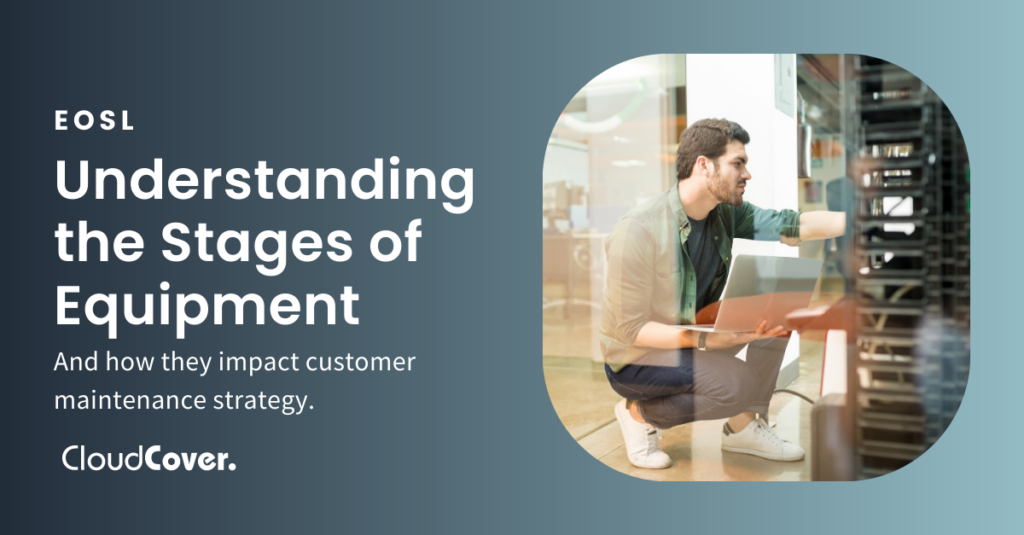
Understanding the Stages of End of Life on Your IT Hardware and Equipment and How they Impact your Hybrid Maintenance Strategy
- 5 Minute Read
- EOSL
In this post:
As your customer’s Cisco product comes to its end of life (EOL), don’t just assume that it is dead. By utilizing a hybrid maintenance management strategy you can keep this perfectly functioning equipment alive and well in an existing network for years to come and long after Cisco declines to cover it. Understanding the stages of the EOL process and your options for supporting EOL products can be a big help as you and your customers plan their network and select their equipment. Opportunities abound to save a lot of money and extend the useful life of existing equipment.
Below is a simple guide to help you understand the key stages of Cisco product retirement. Each of these phases represent an excellent opportunity to move customer equipment to third-party maintenance. The result is a mutually beneficial outcome: Customers will save over 40% off on maintenance and avoid costly OEM refreshes. Resellers will be able to build larger margins with TPM than on a traditional hardware sale.
Stage 1: End of Life Announcement (EOL)
A notification that Cisco will eventually stop supporting a particular product and therefore, no new features or expansion modules will be added to the product line. These products should immediately be on your radar for inclusion in the third party maintenance portion of a hybrid maintenance strategy.
Stage 2: End of Sale (EOS)
Usually occurs one year after EOL is announced and means the product can no longer be ordered through Cisco channels. The product however, is still eligible for Cisco maintenance and is still receiving IOS maintenance or security updates, and bug fixes.
Stage 3: End of New Service
It is no longer possible to put the unit under a new Cisco service contract, though existing contracts can be renewed before they expire. If your customer is facing a lapse in coverage moving the contract to third party support will provide coverage and significant savings.
Stage 4: End of Software Maintenance Releases
Cisco stops issuing any additional IOS updates for the unit. This represents another excellent opportunity to place equipment under third party support to extend the useful life of a customer’s existing equipment.
Stage 5: End of Contract Renewal
Device is no longer eligible for any Cisco maintenance package, however third-party maintenance solutions are readily available.
Stage 6: Last Date of Support (LDOS)
Within a year or less of the end of contract renewal, the unit then goes Last Date of Support and Cisco stops all support for the product, making it obsolete in Cisco’s view.
CloudCover automatically screens customer equipment for its Cisco statuses above. We provide resellers and their clients the ability to extend the life of their networks and avoid new CapEx expenses by adopting a hybrid maintenance strategy with the right third party support partnerships. All in a single maintenance management platform, built specifically for the channel and their customers’ needs.
Want to learn learn more? Read our series “Questions to Ask When Considering Third Party Maintenance.”


